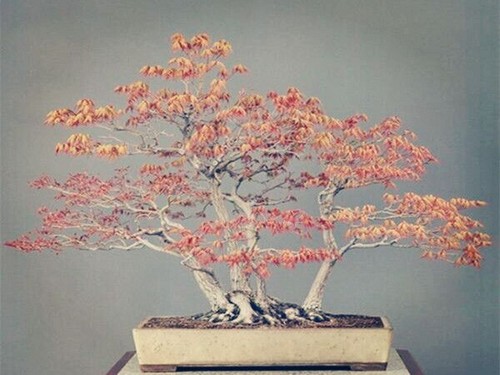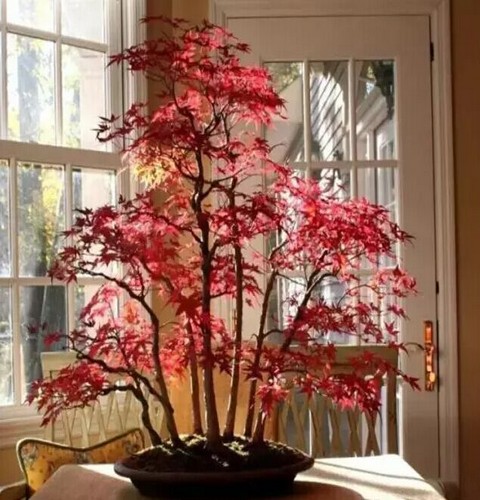Views on Chinese and Japanese Bonsai
Speaking of Japanese potted plants, there are some ideas. Of course, different nationalities, different regions, and the aesthetic concept of advocating standards and habits of beauty do not need to favor one over the other and seek unity, but should be sublimated in the process of mutual respect.
There is no right or wrong in art, only the difference between superior and inferior. Japan is a nation that can learn from it very well, but the reference and imitation of its bonsai is probably only in the Tang Dynasty of China.

Scientific planting and meticulous care, mainly the scrupulous compliance of aesthetic concepts, have created the basic characteristics of Japanese potted plants, which are fat and smooth, mature and stacked, and follow the rules, which let us see the noble, gorgeous and round plump at the same time, but also let us vaguely smell a leisurely and lazy atmosphere, just like watching the paintings of Chinese court ladies in the Tang Dynasty.
The track of historical development remains unchanged for thousands of years, which is not only an unexpected continuation, but also a deep feeling that is difficult to fully convey. But it must not be said that it is not beautiful, nor can it be said that it does not have the thickness of beauty.
Chinese bonsai has come all the way from the Tang Dynasty, although it has faltered and ill-fated from time to time, but after all, it has gone from immature to steady, and there is no doubt that it will be more or less with the rich aesthetic color of continuous progress in various times. today, it finally emerges as beautiful as a poem.
The force of nature, the trend of pluralistic aesthetics and the infiltration of various cultural elements have laid the foundation of Chinese bonsai and cast its colorful cultural soul at the same time. Her ultimate aesthetic direction is the broad and profound Chinese culture. The wild and immortal pattern reflects the worship of nature, and the flexible branch skills exude a school of fairy charm.
It is difficult to imagine what kind of form an art that takes away the cultural soul will appear in front of the world. If we compare Chinese bonsai with many exotic bonsai, people who have a little grasp of the meaning of Chinese culture must be self-evident.
Time: 2019-05-23 Click:
- Prev

Nine special techniques of bonsai creation
Like poetry, painting and garden art, scenery comes from nature and life, but their forms of expression are different. They permeate each other and learn from each other. Poems and paintings are often drawn from gardens and bonsai, and the creation of gardens and bonsai emphasizes poetic and picturesque. therefore
- Next

Bonsai--a magic tool to beautify a room
Place bonsai in the room, on the one hand conservation, on the other hand viewing. It is best to use a sprayer to sprinkle water, or move to the outdoor sprinkler and then put it back, but indoor lighting and ventilation are poor, which is unfavorable for plant growth, and can be rotated regularly with outdoor bonsai. Decorate the room with bonsai, from greening to beautification
Related
- Fuxing push coffee new agricultural production and marketing class: lack of small-scale processing plants
- Jujube rice field leisure farm deep ploughing Yilan for five years to create a space for organic food and play
- Nongyu Farm-A trial of organic papaya for brave women with advanced technology
- Four points for attention in the prevention and control of diseases and insect pests of edible fungi
- How to add nutrient solution to Edible Fungi
- Is there any good way to control edible fungus mites?
- Open Inoculation Technology of Edible Fungi
- Is there any clever way to use fertilizer for edible fungus in winter?
- What agents are used to kill the pathogens of edible fungi in the mushroom shed?
- Rapid drying of Edible Fungi

